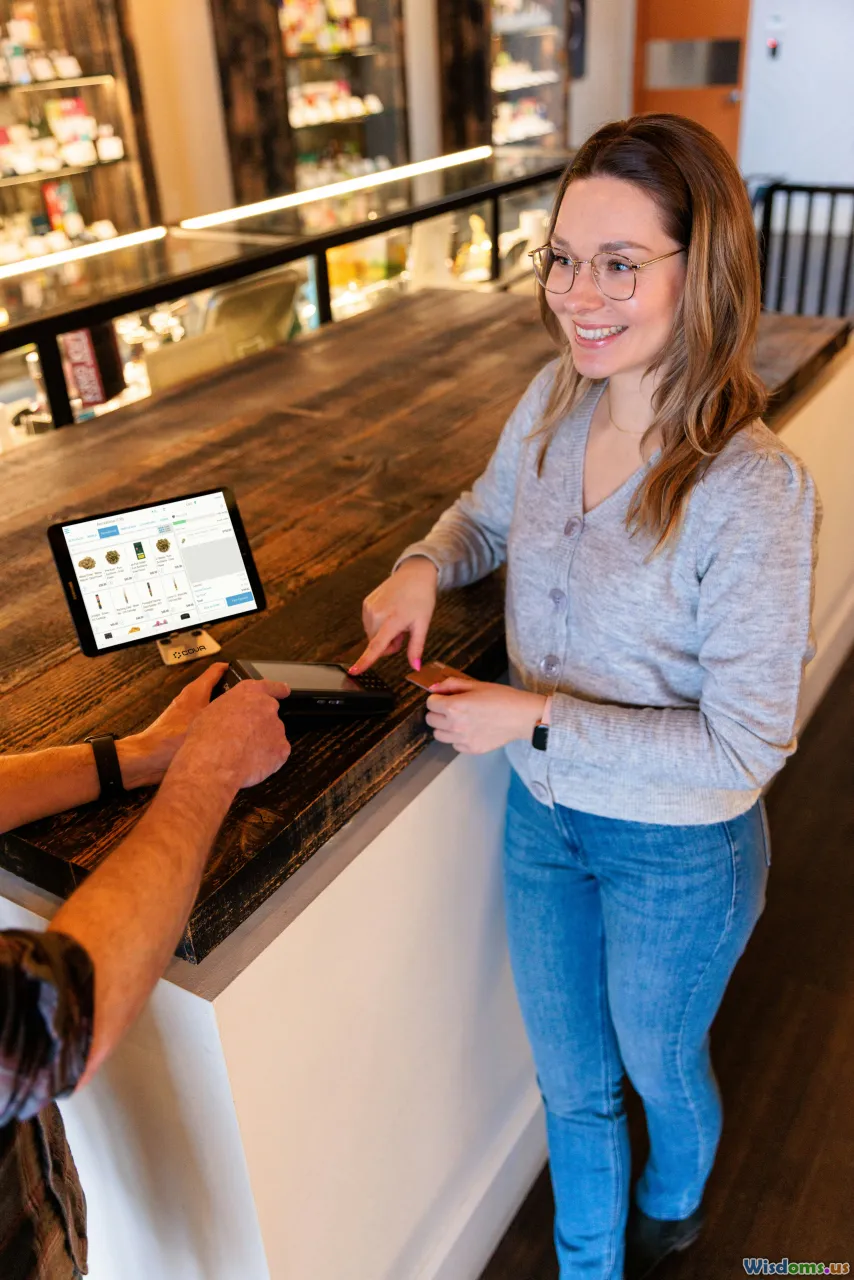
Can Personalization Alone Boost Customer Satisfaction
11 min read Explore whether personalization alone is enough to improve customer satisfaction and discover additional strategies for an exceptional customer experience. (0 Reviews)
Can Personalization Alone Boost Customer Satisfaction?
In a crowded market with tech-savvy, demanding customers, businesses relentlessly pursue tools that increase client delight. Personalization—using customer data to tailor experiences, recommendations, and communication—has emerged as a leading strategy. Marketers tout its potential: personalized emails have a 26% higher open rate, and 80% of shoppers are more likely to purchase from brands that offer tailored experiences. Yet for all the buzz, one crucial question remains: can personalization alone truly boost customer satisfaction? Or is it simply one piece of a complex puzzle?
Let’s examine how personalization works, its impact on the customer experience, and the crucial complementary factors that shape authentic, long-term satisfaction.
The Allure of Personalization: What it Promises

Personalization fabricates an almost magical encounter for customers. When Netflix predicts the perfect show for your Friday night, or Spotify auto-generates a music playlist that mirrors your tastes, these platforms create micro-moments that feel both convenient and intimate. It's not just entertainment—Amazon’s product recommendations drive upwards of 35% of its total sales, showcasing personalization's potent commercial power.
Across various industries, personalization takes distinct but equally compelling forms:
- Retail: Sending tailored discounts or product suggestions based on browsing and past purchases.
- Banking: Suggesting new services tailored to significant life events like marriage or buying a home.
- Travel: Airlines offering vacation bundles premised on traveler history.
- Healthcare: Precision medicine leveraging patient data for custom treatment plans.
These examples demonstrate that personalization, when aligned with a customer’s intent and preferences, can drive higher engagement, conversions, and perceived value.
The Customer Satisfaction Equation: Far More Than Customization

Despite success stories, evidence suggests that personalization is only one variable that influences satisfaction. Researchers at McKinsey broke down the dimensions of satisfaction into:
- Functional value (Does the product/service actually work?)
- Emotional value (Was the experience enjoyable, relieving, or inspiring?)
- Ease and convenience
- Resolution of problems
Personalization enhances ease, may add emotional value, and occasionally streamlines problem-solving. Yet, if a product is unreliable, or customer service is lacking, individualized offers do little to salvage overall satisfaction. Consider these examples:
- Telecom Providers: Even with personalized plan recommendations, common gripes like poor signal or slow resolution for outages drag satisfaction scores down.
- Online Retail: Personalized emails might entice clicks, but broken promises (like late delivery) frustrate customers.
A 2022 PwC report highlighted this disconnect: 59% of consumers will abandon a brand after several bad experiences, regardless of personalization level. It’s holistic excellence—consistent reliability, clear communication, respectful support—that forms the bedrock of customer satisfaction.
When Personalization Goes Awry: Backfires and Pitfalls

Not all personalized experiences are welcomed—or accurate.
- Too Intrusive: Target’s infamous case of sending a teenage girl pregnancy-related coupons before her family knew the news is a cautionary tale about data-driven personalization.
- Poorly Executed: Recommending irrelevant products or—worse—reminding a bereaved customer about items for a lost loved one, can not only miss the mark but breed resentment.
- Privacy Violations: Zendesk found that 62% of consumers fear misuse of their data in personalization efforts. When Starbucks was hacked in 2014, personalized data became a liability multiplying customers' concerns.
Personalization only strengthens satisfaction when it’s invisible, natural, and respectful. When done clumsily or unlawfully, it erodes trust and satisfaction rapidly.
How Personalization Augments (But Cannot Replace) Superior Service

Outstanding customer care, straightforward processes, and empathy remain non-negotiable. Personalization can make these pillars shine brighter—by speeding up solutions, anticipating needs, or simplifying choices. Amazon’s "customers who bought this also bought..." feature doesn’t replace helpful reviews, accessible support, or hassle-free returns; it enhances them.
A Harvard Business Review analysis showed that customers appreciated personalized customer support (for example, agents referencing purchase history), but only when speed and resolution took precedence. In sectors like healthcare or finance, the stakes are higher: bespoke advice works best when coupled with transparency and accountability.
Case in Point: L.L.Bean is lauded for its personalized product suggestions, but it is the company’s legendary hassle-free return policy and competent, patient staff that win unwavering loyalty.
Human Touch: The Missing Ingredient in a Fully Personalized World

Research consistently shows that even digital natives value empathy and real-time human help. In a 2023 Salesforce study, 76% of customers said they’re more loyal to brands that demonstrate understanding—not just knowledge—of their needs. Netflix, for all its algorithmic genius, relies on responsive customer support during streaming crises and on sociable social media managers to shore up fan enthusiasm.
Consider the hospitality industry. Marriott’s Bonvoy app astutely recommends upgrades and amenities, but guests highlight memorable interactions—front desk staff asking about a previous stay, concierges recalling preferences—as key satisfaction drivers. Ultimately, personalization should empower employees to recognize and embrace every customer as a unique individual, not a data point.
Building a Holistic Customer Experience Engine

Personalization belongs within an ecosystem designed around the entirety of the customer journey.
Key Elements of a Robust Satisfaction Strategy:
- Integrated Data Systems: Break down silos so personalization, support, and logistics all have the same customer context.
- Omnichannel Consistency: Whether in-store, app, or website, customers should feel the same care, tone, and options.
- Proactive Service Recovery: When something goes wrong, personalization can anticipate problems—but swift, empathetic resolution builds trust.
- Transparent Communication: Let customers know what data is used and let them control personalization features; privacy builds confidence.
- Human Empowerment: Use personalization to help staff, not supplant them—recommend solutions, but let empathy win the moment.
Example: Chick-fil-A consistently ranks at the top for customer satisfaction. While its app personalizes orders and offers, what cements loyalty are proactive apologies for delays, polite staff, and managers who step in where technology can’t.
Actionable Advice: Balancing Personalization and True Satisfaction

Enhance customer satisfaction with these evidence-backed steps:
- Start With Fundamentals: Ensure products and services consistently meet core expectations (reliability, speed, responsiveness).
- Personalize Thoughtfully: Use relevant, non-invasive data. Only suggest what matters, when it matters.
- Respect Privacy: Obtain clear consent, offer settings to manage personalization, and never overstep boundaries.
- Enable Staff: Arm customer-facing teams with data-driven insights for well-informed, compassionate service.
- Measure What Matters: Go beyond NPS/CSAT scores—analyze retention, sentiment, open-ended feedback, and social listening for nuanced insights.
- Be Ready to Apologize: Automated personalization means mistakes happen. Swift, humble corrections can convert errors into memorable service moments.
The Power — and Limits — of Personalization

Personalization opens doors for increased relevance, convenience, and potential delight—but it is not a silver bullet. Its greatest gift is making customers feel recognized, but lasting satisfaction is the offspring of trust, fulfillment, and genuine human care.
In the pursuit of loyal, satisfied customers, great businesses fuse smart data with smarter service, continually refining the balance between personalized technology and authentic connection. Invest in personalization, by all means; but match it with attentive service, ethical data use, and delightful real-world touchpoints. That’s where satisfaction—true, memorable, and durable—will flourish.
Rate the Post
User Reviews
Other posts in Digital Marketing
Popular Posts














